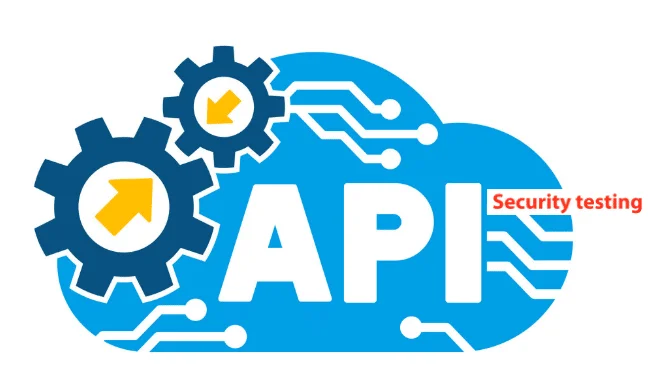What is an API and Rest API Testing?
An API is a mechanism of transferring information between two computer systems. Rest API Testing is very important to ensure accurate working of the integrated workflows.
Modern Web APIs are usually implemented using REST (Representational State Transfer).
The RESTful style has been recognized as the international standard because a single REST API can be consumed simultaneously by mobile devices, web applications, and IoT devices without any alterations, making it the cheapest and most flexible way to build modern applications.
Why do we need API Security testing?
As APIs increasingly link our most intimate and sensitive data, their value continues to grow. Hundreds of expensive endpoints are very attractive to hackers. Insurance before, during, and after production becomes a board game.
Other serious consequences of violating Rest API Testing include:
• Loss of customer data. Then, these data are sold on the black market.
• Damage your website and your business. This will seriously affect your reputation and the reputation of your brand in the market.
• A decline in users and revenue.
• Claim.
Types of REST API Security Testing
The three main types of Rest API Testing that constitute the security screening process can protect APIs from external threats.
Safety Test
Rest API Testing through the safety test checks whether the basic safety requirements are met. The following questions are important to answer:
• What type of authentication is required to use the API?
• How to assess the identity of the end-user?
• What type of encryption is used for the stored data, and when is it decrypted for transmission?
• Under what conditions are users allowed to access resources?
This stage of the review process is the first stage and helps avoid serious loopholes.
Penetration Testing
Rest API Testing through penetration testing enables you to protect the external surface of your application from vulnerabilities that may appear during the development process.
At this point, the external aspects of the API are deliberately considered in a controlled environment. You can use automated tools such as Netspark or Acunetix to accomplish this. When organizing a penetration test, the following steps should be taken:
- Determine the list of potential vulnerabilities applicable to the application (for example, do you have resources such as images that might expose directory cross-attacks?)
- Order items according to your risk. You can use the OWASP Top Ten Websites to better understand the risks associated with each type of vulnerability.
- The engineering requirements and sessions that trigger the attack and send it to the system, preferably inside and outside the network.
- If there is unauthorized access to the system, please submit a vulnerability report and correct the problem again.
FuzzTesting
Rest API Testing through Fuzz testing is the last aspect of the security inspection process, and the API has reached its limit. This can be solved by sending numerous requests and trying to diversify the data in as many creative ways as possible to solve a potentially large number of security vulnerabilities.
Security vulnerabilities can be exploited through denial of service or flooding attacks.
Security Testing Process
Step 1. Determine the security requirements
To plan a Rest API Testing security review, you must first understand the general requirements. This means asking the following questions:
- Should the API use TLS/SSL?
- Can the certificate be accessed via HTTPS?
- Which authorization groups can be used for different resources in the application? What is the authentication process?
- Are you using the external provider OAUTH?
- What is the attack surface of the API? Where can an attacker break into the application?
In addition to the above questions, it is important to have a good understanding of the meaning of passing and failing the test.
Step 2. Set up the test environment
After determining the scope of the Rest API Testing, the application environment can be prepared. For small applications, it is recommended to use a standard test environment. When there are many internal states, it is best to set up a separate test environment by copying all resources to a temporary environment or using tools such as WireMock to simulate them.
Step 3. Check the function of your API
Some Rest API Testing requirements are required to ensure that everything is configured correctly.
Step 4: Confirm the input field
Before developing a single test case, it is important to understand the role of each parameter and the allowed combinations. In this way, you can define edge cases (almost invalid values) and determine the parameters that are most vulnerable to injection attacks (such as SQL injection).
Step 5: Develop and run test cases
After preparing the test environment and understanding the edge case capabilities, you can create and run tests by comparing actual results with expected results. It is recommended to group them according to the type of test being performed. The following are some examples:
- Is it possible to use HTTP and HTTPS to access resources?
- Do all endpoints require authentication?
- Support uploading files. What if you upload a potentially malicious file of the MIME type expected by the application?
- If a web application using API embeds custom information (such as a name) in the page, what if you provide HTML/JS elements?
- Can you access the resources of unauthorized tokens?
By following these instructions, you should have a good understanding of the security status of the application and many tools to ensure that there are no major security issues in production deployments.
REST API Performance Testing
Rest API performance testing is important in measuring response time, analyzing the infrastructure used for hosting, and maintaining applications.
• Ensure consistency of application performance and application scalability.
• Help the development team to identify the performance problems with the growth of the user base (slow API, memory leaks).
• Depending on the application type and target user group, the application must service the request without causing high latency or any downtime. (Especially if the application is a new application on the market, it can play a significant role in the user’s adoption of the application.)
Running the PT before launching any application helps to retain users by ensuring the stability of the application.
Things to consider before performance testing:
• Simulate data in real-time as expected.
• Expected users and frequency of use of specific application features.
• The geographic location of the server deployment and the location of the stress test.
It is impossible to rule out all problems and get the desired results, but we can try to get close enough. If you obtain incorrect resource specifications, your application may slow down or freeze during critical periods.
Users will be upset, and the company may lose money and reputation as a result. Checking the specifications carefully and obtaining excess capacity can greatly increase cost and complexity, but this is the price you pay for minimizing risk.
How to Load Test APIs
Various tools can be used to load test API. For example, Apache JMeter is an open-source solution that allows you to send HTTP requests to specific endpoints and measure response time, error rate, and other response data.
A browser-based platform to optimize the process can also be used to identify and eliminate bottlenecks.
Through this Rest API Testing guide, we tried to cover numerous associated information highlighting the benefits, process, and importance of Rest API Testing. We will elaborate more on the topic in the chain of the next blogs.



